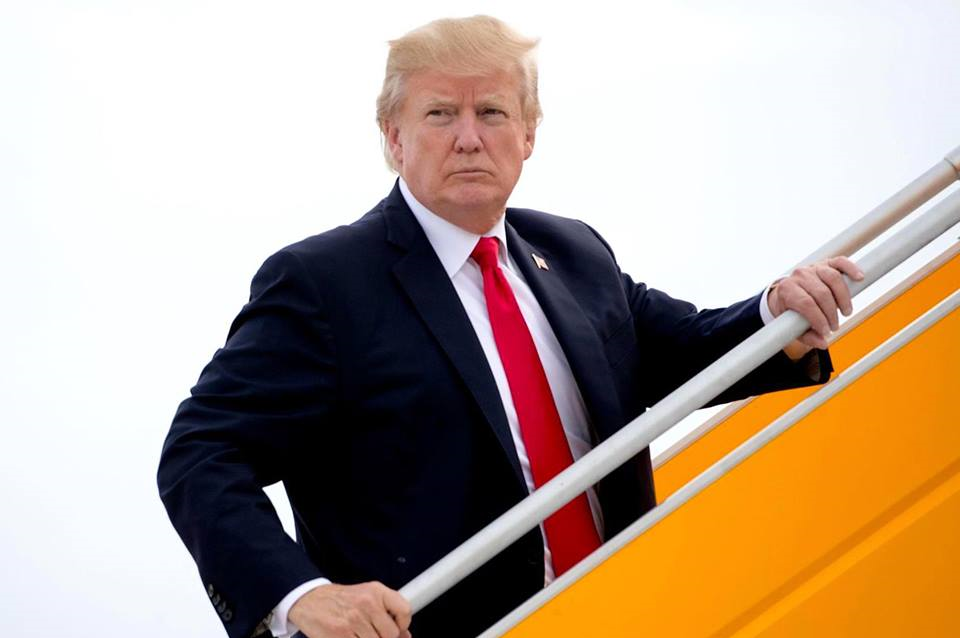
WASHINGTON— Over the past week, President Donald Trump told a made-up story about his predecessor and revived a distorted claim about NATO that’s been gathering dust for some months.
On those occasions and more, his purpose was to illustrate “tremendous success” on his Asia trip, an extended journey that actually produced little visible or immediate change. He also reached back to earlier travels to make his case.
A sampling of his statements toward that goal:
TRUMP, recapping a trip in May: “In Brussels, I urged our NATO allies to do more to strengthen our crucial alliance and set the stage for significant increases in member contributions. Billions and billions of dollars are pouring in because of that initiative. NATO, believe me, is very happy with Donald Trump and what I did.”
THE FACTS: No, billions are not pouring into the organization because of Trump. It’s not even an issue of financing NATO as an organization. The issue is how much countries in the alliance spend on their own military budgets. That appears to be creeping up, but even so it is hard to find Trump’s fingerprints on what is happening.
A campaign to increase military spending began in 2014, before Trump was president, when NATO members agreed to stop cutting their military budgets and set a goal of moving “toward” spending 2 per cent of their gross domestic product on their own defence by 2024. It was not a commitment and Trump had nothing to do with it. Only five of the 29 members the U.S., Britain, Estonia, Greece and Poland meet or exceed 2 per cent. NATO Secretary-General Jens Stoltenberg said he expects Romania to reach the target this year, with Lithuania and Latvia likely to reach it next year.
Trump has put pressure on members with lagging spending to do more. It’s not clear that pressure has made them “very happy with Donald Trump.” He frequently made such claims about NATO in his first months in office.
TRUMP, claiming a turnaround in relations with the Philippines because of his visit: “The relationship with the past administration was horrible, to use a nice word. I would say horrible is putting it mildly. You know what happened. Many of you were there, and you never got to land. The plane came close but it didn’t land.” before getting on Air Force One on Tuesday to come home.
THE FACTS: This didn’t happen. Air Force One was not denied landing rights when President Barack Obama flew there.
Obama last visited November 2015, arriving in Manila after an overnight flight from Turkey. He used the visit to announce the U.S. was transferring two ships to the Philippine Navy.
Trump might have been referring to Obama’s aborted meeting with President Rodrigo Duterte in Laos in September 2016. If so, he’s also wrong.
Obama abruptly cancelled a meeting with the new Philippines leader in Laos after Duterte called him an obscene name. Duterte was warning Obama not to speak with him about the brutality of his crackdown on the illegal drug trade. Obama went ahead with his Laos trip, meeting other leaders.
TRUMP, claiming common ground with China’s leader, Xi Jinping, on North Korea: “President Xi recognizes that a nuclear North Korea is a grave threat to China, and we agreed that we would not accept a so-called freeze for freeze agreement, like those that have consistently failed in the past.” comments to reporters Wednesday.
THE FACTS: The two sides did not agree on that point, China said.
Beijing said it has not changed its position that North Korea should gain concessions under an agreement that would see two things happen: North Korea would freeze its nuclear weapons program and the U.S. and South Korea would freeze their major joint military exercises.
“We believe that the freeze-for-freeze initiative is the most viable and reasonable plan against the current backdrop,” Chinese foreign ministry spokesman Geng Shuang Geng said after Trump’s remark. The U.S. has long dismissed the proposal, saying North Korea must unilaterally cease its program before negotiations can begin.
TRUMP: “In China, we also announced $250 billion worth in trade, investment deals that will create jobs in the United States.” statement Wednesday.
THE FACTS: The announcement, also heralded a week earlier by Chinese and U.S. officials, represents previously struck deals, tentative investments, statements of intent and extensions of business with existing Chinese customers, with some new orders. They do not point to a turnaround in deep-seated trade tensions between China and the U.S. For example, the initiative provides for the Chinese purchase of 300 Boeing jetliners that have a list price totalling $37 billion. That deal is known to be a mix of old and new orders and appears to fit in the normal order of business. As well, airlines get deep discounts from the list price.